My name is Thersa and you’re listening to Uncanny Japan.
Let me tell you about a little experiment I’m doing. I’m trying to befriend a crow, or several crows. I don’t know. At the moment they all look alike. So I can’t tell.
My Effort to Befriend Crows
I really like crows. I remember how they were acting all wonky on the day of the Tohoku Earthquake. Enough so, that I took note. Then the earthquake struck. So I put two and two together and like to pretend they were trying to warn me and anyone who would listen. In fact, it could have been they felt some kind of ionization of the air or some electrical something or other. But I’m 700 kilometers away from the epicenter. So I don’t know. I’m not sure how they knew a huge earthquake was coming, but I’m convinced they did.
So now when I hear a crow outside, I go out, say hello, hold up some tidbit of food and place it on this cement wall in front of the house. I then hurry back inside. Depending on the crow, they’ll usually wait until I’m gone before they swoop down and see what’s on the menu for today’s snack. Peanuts, almonds, piece of fruit, cheese, cookie? I peek from the window and delight in the whole thing. I’m hoping to get to the point where I don’t have to hide.
My son, Julyan, used to do the same thing from his second story bedroom window when he was in first grade. He said he wanted to make an army of crows. I thought that was cute. Now I think it’s a worthy goal. Or, well, I hope to at least get to the point where before the big Tokai Earthquake in my area, one of them alerts me and together we can save the city.
Anyway I’m not very far along in my friendship venture, but sometimes Richard is teaching in the front room (where my peeking window is) and one of the crows will come and start cawing at the house. He yells for me and says, “Terrie, your crow is here!” So I have to hurry up and find something to feed it. Let me tell you, it’s a wonderful important feeling, being ordered around by a crow.
Today I’m going to talk about karasu/crows. Not crow tengu because I talked about them in Episode 32. But crow myth and folklore and superstitions.
Intro:
Hey hey! How are you?
“The Wife Who Didn’t Eat” up on Libro.fm
I have good news! My little retold folktale of “The Wife Who Didn’t Eat” is finally up on a bunch of audio book places. Libro.FM, the one I talked about that gives a little of their profits to local bookstores has it, Barnes & Noble, Kobo, Nook, and more. It’s only an hour long, but might be interesting to those who like Japanese folklore. It’s my retelling of the story, slight reimagining, and a little commentary at the end.
Two Main Types of Crows
Okay, on to today’s show. Karasu is the word for crow in Japanese and it can refer to both of the two main birds: the Jungle Crow or the Carrion Crow, as well as a couple of migrating crows that also go by karasu and that would be the miyama garasu/rook, kokumaru garasu/jackdaw, and the watari garasu/northern raven. All karasu.
Speaking of the two main kinds of crows, the Jungle Crow or large-billed crow can usually be found in the cities of Japan or areas above 1,000 meters, preferring tall three dimensional environments. While the Carrion Crow like to hang out in what is called two dimensional, rural areas, suburbs, and riverbeds.
I don’t really hear any complaints about crows here so much, but in the bigger cities they can be a nuisance, evidently. They’re noisy, they steal coat hangars and make nests in powerlines, sometimes causing outages. They’re so smar, too, and may or may not steal that melon pan bread your carrying in your open bag. But, hey, they also keep the mouse population in check. So…
Two Crow Castles in Japan
Did you know there are two Crow Castles in Japan. The Okayama Castle and the Matsumoto Castle. The Okayama Castle is in Okayama Prefecture and is also called Ujou. It’s painted all black with gold trimmings and was finished in 1597. The Matsumoto Castle is in Nagano Prefecture, also black and also stunning and called Karasu-jo.
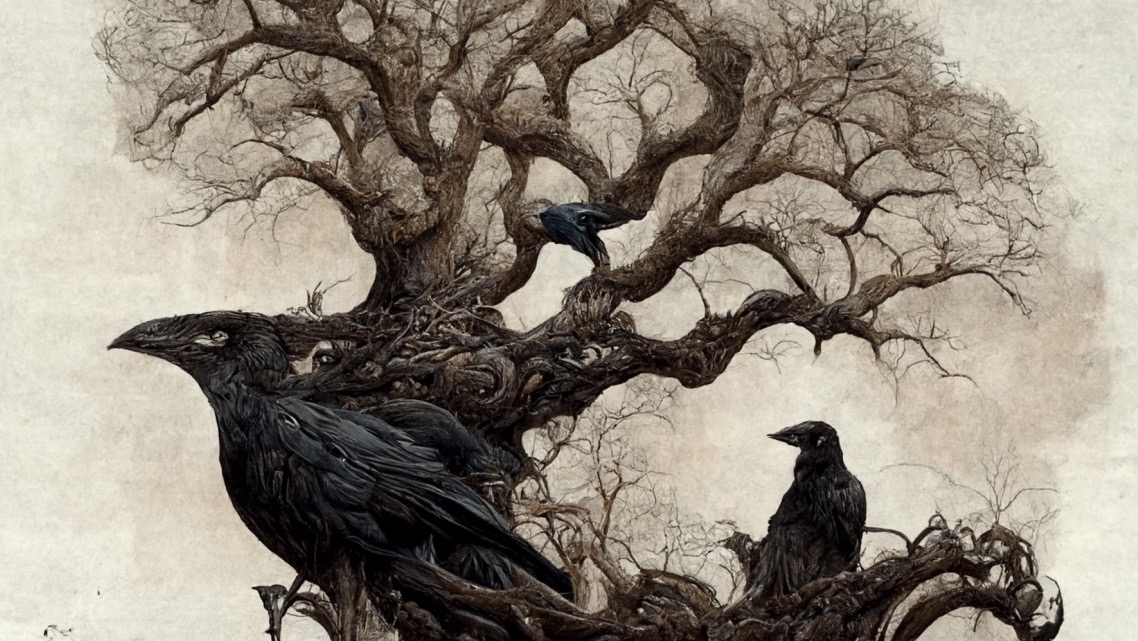
Crow Behavior
Before I get to the myth and superstition, let me tell you about a professor at Tokyo University, a Mr. Higuchi, who has been studying and observing crows for almost fifty years. In his book he talks about some interesting crow encounters. He’s named types of crow behavior: like “car crows” who drop nuts where a car will run over them and break their shells, and “stone placing crows” that put stones on railway tracks, no idea why. Then there are the “public bath crows” that visit onsen, and “soap crows” that go into bathrooms and steal soap. There are also “small fire crows” that steal lit candles from shrines, and “faucet crows” that can turn on the faucets in parks. They use their beaks to turn the faucet a little for a drink, or a lot to fill up the sink so they can bathe.
Small Fire Crows
I thought the small fire crows were really interesting. They’re found near Fushimi Inari Shrine in Kyoto. And they will literally swoop down and steal a lit candle and fly away. They like to bury the candle under fallen leaves or in thatched roofs. Which you can imagine is quite dangerous if that thing didn’t blow out while they were in flight or it’s still hot. No one knows why they do this.
Yatagarasu
Another crow related legend is the Yatagarasu/八咫烏 or Yata no Karasu? It means Eight-Span Crow (it’s big!) and it’s a mythical Shinto god that helps guide you. It was said to have guided Emperor Jimmu/ on his Eastern expedition from Kumano to Yamato.
This (holy) bird is written about in the Kojiki and Nihon Shoki, but one bit of important information that can’t be found there is the fact that the Yatagarasu has three legs! That little trait seems to have popped up later in the Heian Era (around 930). There was a three-legged crow from Chinese and Korean mythology whose stories came to Japan, however, so it’s a good bet that the original idea of Yatagarasu in Japan merged with a similar bird myth from China.
In Chinese mythology, though, it’s believed to live in the sun. In Japanese mythology, it’s believed to be an incarnation of the sun.
Why three legs?
The Kumano Hongu Taisha Shrine in Wakayama Prefecture says that the three legs represent heaven, earth, and man. And also the three Kumano clans that once controlled the region.
According to Chinese thought, the three legs stand for sunrise, daylight, and sunset.
On the Korean Peninsula, from what it sounds like in what is now North Korea, there were a people called Goguryeo or Goryeo and they believed three-legged crows lived in the sun and turtles lived in the moon. For some reason I love that.
You might have seen a Yatagarasu and didn’t even know it. Take a look at the emblem for the Japan Football Association and you’ll find a three-legged crow. One claw holding up a soccer ball. I’m sure that’s something the ancestors never would have imagined.
Crows Predicting Death and Other Unfortunate Things
So the reason for today’s crow show, is not just my new founded interest in making a crow army, but I happened to open my book on Japanese animal folk beliefs and turned to the chapter on crows. Ooo boy! The first several pages were all about crows predicting a death. Back in the day, there were tons of superstitions about crows calling and announcing that someone was going to die today. The research in the book comes from different prefectures so as usual, depending on where you are, it’s all a little different perhaps.
But here are some of the ways a crow can predict something bad going to happen.
Over and over again I read that if the crows cry sounds bad/karasu no naki ga warui/カラスの鳴き声が悪い, it portends some misfortune, or simply something that will disrupt your normal life. And just maybe someone is going to die.
It said that you can find stories from Okinawa all the way up to the Ainu in Hokkaido that were similar in that a crow’s strange call would predict a death. It might not be in your household, but maybe your neighbor or the village as a whole.
It would be worse if say the crow landed on your roof and cawed. In that case, you were the one in for some bad luck. Be it someone falling ill, an ill person passing a way, a sudden death or even a fire.
In some places hearing a crow meant it was warning you to check any unattended fires. Just in case.
Apropos of nothing really, in Kanagawa Prefecture, in the Miura area, there was a superstition that there were three pets you should never keep: a crow, an owl, and a cat. I’m not sure why a cat. But…
In Shimane Prefecture Ohara-gun, it was believed that if a crow made a lot of noise someone would get something called kawaki byo or dry sickness. Which I learned meant that you can eat and eat but still be hungry. It’s thought now they were talking about diabetes. So keep an eye and ear out for that.
Crows calling out at night is bad luck. Over and over there were little bits written about crows calling out signaling the fight between a married couple, someone wandering off and getting lost, or if the crow cries at dawn a man from the town will die that day, but if it caws during the night, a woman will pass.
Lots of dying and bad luck.
The Number of Caws Means What?
But then it got a little more interesting, saying that crows usually cry out twice: caw caw. And if you count how many time they call out it can mean different things.
Calling once ain’t good.
Calling out twice ain’t good.
But if you hear three crows: caw caw caw. Then someone is having a baby!
Calling out four times, we’re back to bad luck.
What’s the worst is if they cry out four times, then two, then four again, then two again. Like Morse Code. That would be four two four two. Shi ni shi ni. Shi meaning death and ni indicates someone is going toward something. So if I may translate Crow for you, they’re saying You’re going to die! You’re going to die!
Let’s move past this death bit.
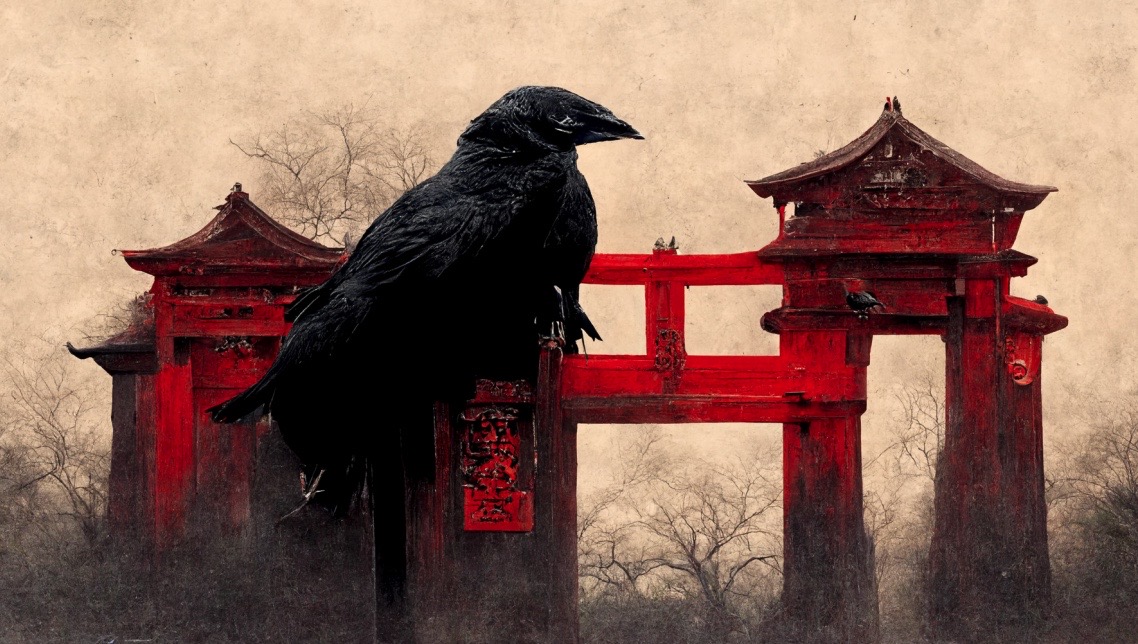
Crows Predicting Weather
Crows bathing. A crow bathing means you’re about to get a change in the weather, perhaps rain. Unless the crow is facing you when it bathes, then you’re going to die. Crap. That again.
I don’t expect you to remember this, because you have a weather app on your phone. But if you’re ever out in the wild remember this:
If a crow flies low and caws, it’s going to rain.
If a crow flies west, the weather will get worse.
If a crow flies from South to north the weather will be good.
If a crow calls out three times while it’s flying, tomorrow’s weather will be fine.
If you find a crow has built its nest high up in a tree then there won’t be any big winds or storms coming any time soon.
To the contrary, if you find your neighborhood crows building nests low in the trees then you’re in for some stormy weather this year.
However, keep in mind that nests high in the tree might also mean you’re going to have some heavy flooding in your area. But, hey, at least you won’t have wind.
A nest at the base of a tree means an entire year of sunshine. Funny. I can’t imagine a crow building a nest at the foot of a tree. Which if you follow logic, means they know what they’re doing.
Older Odd Superstitions
Let’s get to some weird stuff. How to avoid getting a curse put on you.
Well, if you are walking and something gets in your eye, like a piece of dirt or something, old folk belief would have you look upward and say: Take away the dragonfly and the crow! Then spit. That’s what they used to do in Fukui.
In Ishikawa Prefecture, you would open your eyes, look into the sky and say: Fly from State Your Name’s eyes and into the crows eyes.
If you or a loved one happen to fall down and you don’t want to get a bump or have any swelling you chant: Bump Bump, don’t become my bump. Go become a crow’s bump.
Cook up some crow meat, blacked it or boil it, as it was thought to be a miracle medicine for phlegm in Kumamoto Prefecture. No don’t do that. That’s a bad idea.
There was more about eating them.
Or talk about how in Fukui and Okinawa among other places crows are thought to be messengers of the gods, so never kill them. Screw your cold. But then again, in Fukushima Prefecture it was believed they were demonic birds because they would carry fires into homes and burn them down. Remember what I said earlier about the Small Fire Crows? To keep the crows appeased they would place wooden perches on two sides of the roof.
But let’s talk about this one, if you wear your kimono inside out, you’ll become a crow. You can try that one if you’d like.
Here’s something cool that I actually knew about. I read ages ago about an old wives tale that said praying mantis eggs would cure drooling. Weird. I know. But what I learned today is that people used to call praying mantis eggs, crow’s drool.
How about this, if you want to tell a male crow from a female crow, you watch the way they cross their wings. A male bird will cover their left wing with their right wing. And a female will do the opposite, cover their right wing with the left.
And lastly, basically, some places believed that crows could be gods or demons, depending. So it’s best to be nice. For example if a farmer was harvest potatoes or something he’d offer some to the crows and then next year when he planted they would leave his potatoes alone.
Okay, that’s enough crows for today. Thank you very much for listening and I will talk to you all in two weeks. Stay well!
Music Credits
Intro/outro music by Julyan Ray Matsuura
Sweet Romantic Oriental Piano Song by MusicLFiles
Free download: https://filmmusic.io/song/7075-sweet-romantic-oriental-piano-song
License (CC BY 4.0): https://filmmusic.io/standard-license
Artist website: https://cemmusicproject.wixsite.com/musiclibraryfiles

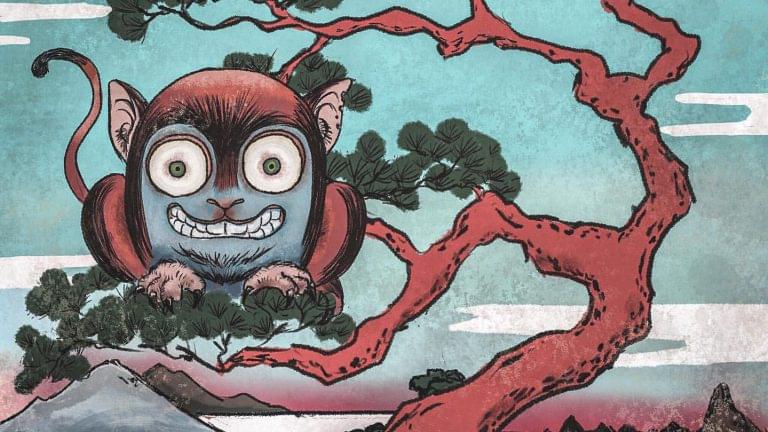
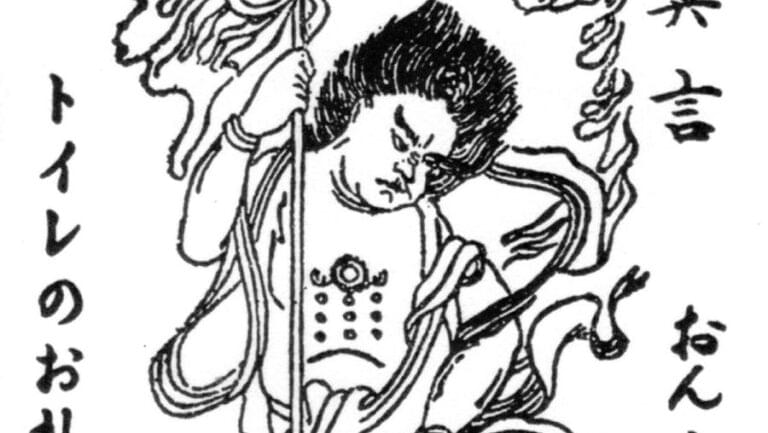
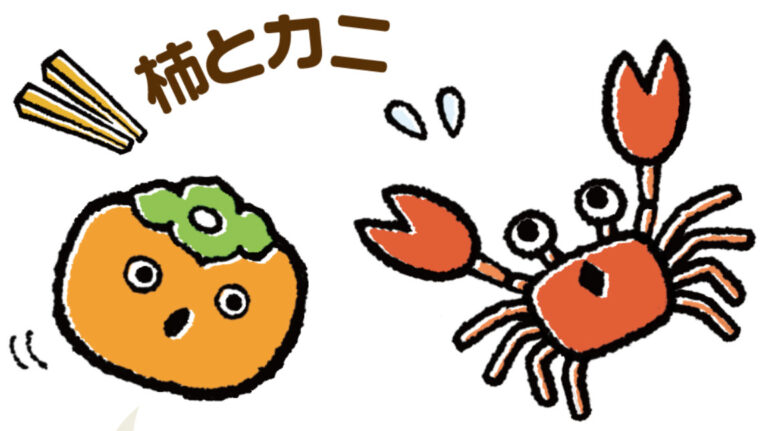
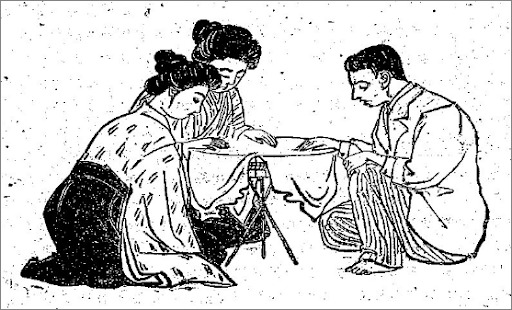


Corn. At least back here in the States the favorite food of the Corvidae family (crow family) is corn. For instance, it’s the best way to attract blue jays.
This was all very interesting. My last name is Crow(e). I have always been interested in the Irish folklore behind them. This is not very different from the Japanese. A triple goddess in Ireland is associated with Ravens/Crows.
However, when I started playing FROMSOFT games, I noticed the very noticeable presence of Crows/Ravens. I am a great fan of Hideo Miyazaki’s body of work from Fromsoft.
Thank you for this insight
What a wonderful last name you have! I am currently very infatuated with crows. I’ve been feeding and befriending (??) several for the past few months. They are so funny and smart. Looking at Miyazaki’s work I see the first one is even titled: Last Raven. I’ll have to look more into him and his work. Thank you for listening 🙏
In INdian belief, crow is sacred people keep water and food outside homes[most homes].Because the belief is our ancestors will come as crow and eat the food.some people daily keep the food to crows and then only they will eat thier food.In Huinduism crow is vahana of sanishvarar.
If u r looking for deeper myth and legend of crows in Hinduism read about Kagapujandar.
This is very fascinating! When I was in high school and university I was very interested in Hinduism and studied it by myself. I will definitely look into this. I love when people love crows and don’t think they are evil creatures. Thank you for letting me know!
I’m glad you can feed crows. My neighbors have given me a very bad time for feeding the crows, which I love so dearly. I am 75 years old and am disabled some physically. They complain that I am making them poop on their precious cars, but my neighbor next door has a water fountain which the birds drink from. Since I have completely stopped feeding them the birds are still pooping on cars. So who has been caused the birds to poop? They don’t get after him for having a water fountain and the birds still poop. I live in Northern California. It makes me so depressed now that I can’t feed them. They sometimes caw to me and I feel like I have abandoned them.
Oh, Nancy, that is so sad. I’m so sorry you have that kind of neighborhood pressure. I know how you feel. I try to be very aware of my neighbors because I suspect they will do the same thing. It breaks my heart that you can’t have that small but deeply sweet joy. I have gotten very close to my crows since I made that episode. They are big bright light in these turbulent times. I even go out and watch the sunset with the dad crow. He’s my bestie!
I have a youtube channel and have put up some of my crow friends doing silly things or, well, just being crows. Here’s one of the videos
There are a couple of them. The mating pair only had one baby survive, but I’m putting together a longer video of them feeding it and it being very adorable.